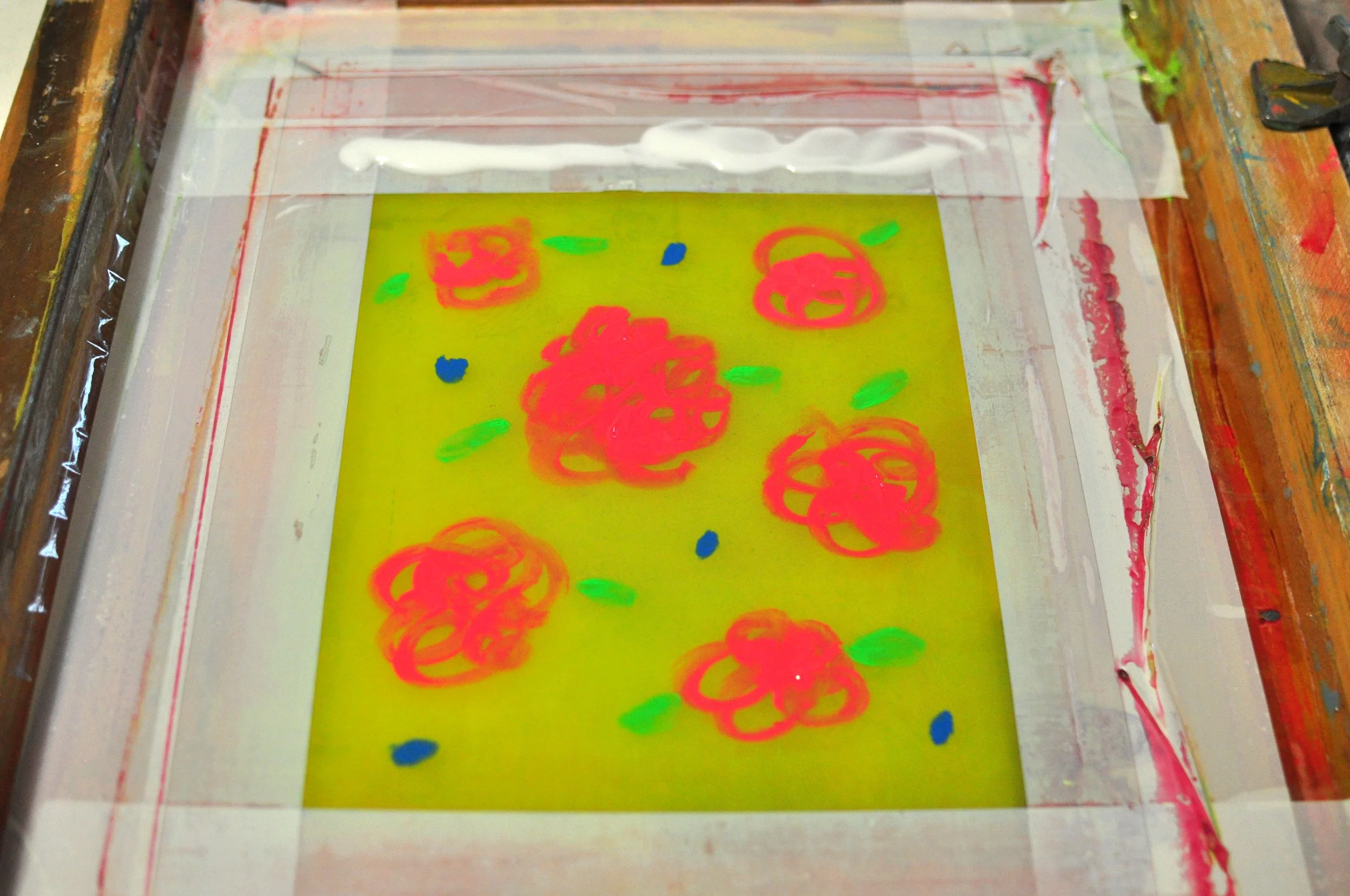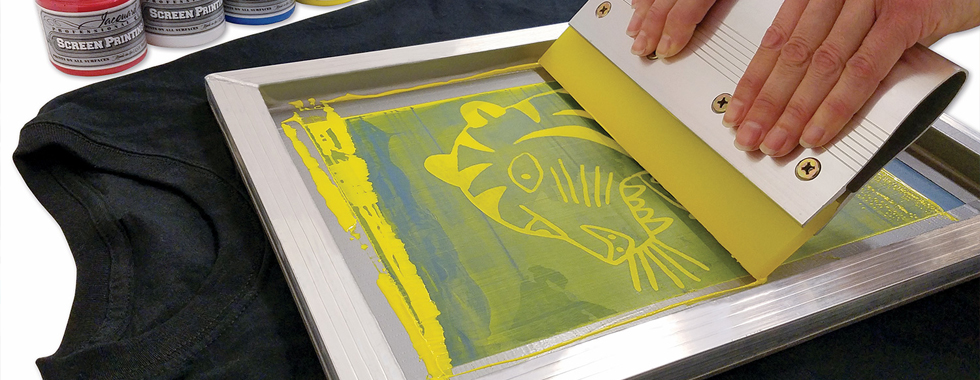ChatGPT said: Everything you need to know about 10:9 Design LLC Company and their screen printing services
The Crucial Overview to Recognizing Screen Printing and Its Versatile Makes use of
Screen printing has an abundant background that dates back to old times, evolving right into an innovative method used throughout numerous industries today. This overview explores the complexities of the screen printing procedure, outlining its applications in advertising, home, and style design - 10:9 Design LLC Company. Understanding these principles can open up imaginative potential for both industrial and artistic jobs. The complying with sections will disclose important tips and techniques to boost one's screen printing endeavors
The History of Screen Printing
Although screen printing has origins that map back centuries, its evolution shows the technical and creative innovations of numerous societies. Stemming in ancient China, the technique was initially used for embellishing fabrics and later infect Japan, where it came to be essential to Ukiyo-e woodblock printing. The approach moved to Europe in the 18th century, where it obtained popularity amongst craftsmens and commercial printers. The creation of photo solution in the 20th century changed screen printing, enabling more intricate layouts and greater efficiency. Artists like Andy Warhol additionally drove its popularity, using the tool to create iconic works that combined commercialism and art. By the late 20th century, screen printing had established itself as a versatile technique, used in vogue, marketing, and fine art. Today, it proceeds to advance, integrating digital modern technology and expanding its applications throughout different sectors.
The Screen Printing Refine Explained
Screen printing changes creative visions into tangible styles through a series of precise actions. A picture is created and then moved onto a screen, usually made of great mesh textile extended over a framework. A light-sensitive solution is put on the screen, which is revealed to light, setting in locations not covered by the picture. After rinsing the unhardened solution, a stencil is developed.
Next off, the screen is positioned over the substratum, whether it be textile, paper, or one more material. Ink is then pressed through the open locations of the pattern utilizing a squeegee, depositing the style onto the substrate listed below. This procedure can be duplicated for several shades, calling for different displays for each hue. Ultimately, the printed item is cured utilizing warm to ensure the ink sticks correctly, leading to a resilient, lively design prepared for usage.
Kinds of Screen Printing Techniques

Additionally, specialty strategies, such as discharge screen printing, eliminate dye from the textile to develop softer prints, while aluminum foil screen printing applies metallic aluminum foil to achieve a glossy finish (10:9 Design Embroidery). Each method provides distinct qualities, satisfying different creative requirements and production scales, inevitably broadening the opportunities within the screen printing domain
Applications of Screen Printing in Various Industries

In addition, the signage and advertising markets utilize screen printing for creating attractive displays and banners. This method permits for bold colors and intricate layouts that catch attention. In electronic devices, screen printing is employed for applying conductive inks to circuit card, crucial for part links. The home design sector embraces screen printing to create distinctive styles on textiles and wall surface art. Overall, screen printing functions as an important device across diverse fields, enhancing products with personalized and aesthetically attractive graphics.
Tips for Successful Screen Printing Projects
While carrying out a screen printing project, mindful focus to information can considerably improve the last result. Initially, selecting high-grade materials is crucial; this consists of the screen, inks, and substratums. Making use of appropriate mesh matters can impact ink deposition and information resolution. Prep work is just as vital; extensive cleaning of displays and correct direct exposure times ensure crisp prints.
Next, exact registration is important for multi-color prints. Making use of positioning devices can assist attain exact layering. Additionally, testing prints on scrap materials prior to manufacturing assists determine potential issues without squandering sources.

Frequently Asked Inquiries
What Materials Are Ideal for Screen Printing on Textile?
Cotton and polyester blends are excellent for screen printing on material because of their sturdiness and ink absorption. Additionally, specialty fabrics like silk or canvas can generate unique textures and surfaces, boosting the general design high quality.
Just how Do I Clean and Maintain Screen Printing Devices?
To preserve and cleanse screen printing tools, one must on a regular basis clean screens with suitable solvents, evaluate mops for wear, lubricate relocating parts, and shop all products in a completely dry, dust-free environment to prolong their life expectancy.
What Are the Ecological Effects of Screen Printing?
Screen printing can have considerable environmental influences, including chemical waste from solvents and inks, water use during cleansing processes, and power intake. Green products and sustainable techniques are essential for reducing these negative effects.
Can Screen Printing Be Done in your home Properly?
Screen printing can be successfully done at home with the right materials and methods. Hobbyists can develop quality prints, though success depends upon their skill level, tools, and understanding of the procedure involved.
What Are the Expenses Connected With Starting a Display Printing Company?

Starting a screen printing service entails costs for equipment, materials, and work space. Preliminary costs typically vary from a few hundred to numerous thousand bucks, relying on the range, top quality of equipment, and desired manufacturing capability.
Screen printing has an abundant history that dates back to old times, advancing into a sophisticated method utilized across different industries today. One more strategy, rotary screen printing, utilizes round displays, facilitating constant printing on fabric rolls, thereby enhancing effectiveness for large manufacturings. Furthermore, specialized strategies, such as discharge screen printing, eliminate color from the material to produce softer prints, while foil screen printing uses metal foil read more to attain a shiny finish. In the fashion market, screen printing is commonly made use of to create lively styles on clothing, enabling brands to showcase their unique styles. Cotton and polyester blends are excellent for screen printing on textile due to their toughness and ink absorption.